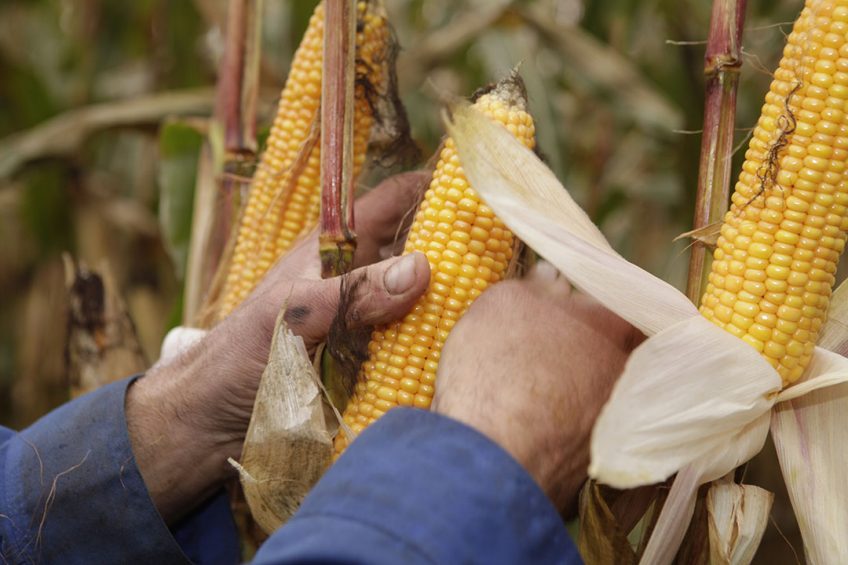Mycotoxin Survey 2020: DON and FUM most prevalent

Last year DON and FUM were still the most prevalent mycotoxins globally. This can be seen from the results of the annual World Mycotoxin Survey released by Biomin.
In 2020 Biomin analysed 21709 samples from 79 countries. The results showed that the most prevalent mycotoxins globally in 2020 were the Fusarium mycotoxins DON (65%) and FUM (64%), followed by ZEN (48%). According to Alexandro Marchioro, senior mycotoxin expert at Biomin, climate change is the main trigger influencing mycotoxin prevalence around the globe. In a webinar he explained: Extreme weather conditions and events, like drought, desertification and floods affect the life cycle of fungi, what influences mycotoxin occurrence.
Click here for 2020 mycotoxin survey and previous years
Europe
In Europe the most prevalent mycotoxin is still DON, followed by ZEN and FUM. The high risk in Europe is mainly due to high prevalence of DON in corn. “70% of the samples tested positive on DON,” explains, Annelies Mueller product manager, Biomin in a webinar. ” Besides the high Prevalence of DON we see a slight increase in the average contamination of corn with ZEN to 171 ppb.”
North America
Risk in North America is extreme. DON is one of the main concerns in all species in North America. Alexandro Marchioro, senior mycotoxin expert at Biomin: “We observed a high prevalence of DON, 72% of the samples was contaminated.” Average of positives for DON in corn (maize) was quite high with 808 ppb and even higher in cereals (1,721 ppb). “We also saw a high co-contamination level in corn, 60% of the samples was contaminated with more than one mycotoxin.” The survey also showed high levels of Fusarium in DDGS (Dried distillers’ grains with solubles), a corn by-product.
Central and South America
In Central America nearly all (97%) corn samples tested positive for FUM at an average of 1,820 ppb and a maximum of 24,233 ppb. In South America also corn was highly contaminated with FUM at 83% and an average of positives of 2,280. The survey shows that DON is the main threat in wheat in South America, found in 83% of the samples. Also soybeans appear affected with mycotoxins, most abundant in South America was ZEN in 73% of the soybean samples.
What is the impact of mycotoxins per product? – find out more
Asia
Risks are extreme in South Asia and China and Taiwan. In Southeast Asia and East Asia risk is severe. Mueller: “We see high levels of FUM again in these regions. And it is also interesting to see that the levels of OTA and T2 increased compared to last year.” The data shows a FUM contamination of 96% of corn, followed by DON in 80% of the samples tested. Alfa and ZEN are a risk for animal production. Zen was present in 68% of the samples analysed and a maximum of 11,786 ppb was found. In corn, Aflatoxin was found as high as 2,495 ppb.
Africa
The main risk in Africa is due to DON followed by FUM. In cereals, 92% of the samples were contaminated by DON with a maximum of 917 ppb. South African corn was highly contaminated with Fusarium toxins. DON was the most prevalent mycotoxin, followed by FUM and ZEN. In South Africa we also tested straw samples. These samples showed high levels of ZEN, with an average of 1,664 ppb and a maximum of around 2,900 ppb detected.
Masked and emerging mycotoxins
Masked mycotoxins remain an increasing problem. The masked mycotoxin Deoxynivalenol-3-Glucoside was present in 44% of the samples. The analyses also showed the presence of several emerging mycotoxins. Moniliformin was found in 56% of the samples, mainly Poultry is very susceptible for this mycotoxin. Other emerging mycotoxins that were found in the analyses were Beauvericin (48%), Enniatin B1 (35%), Enniatin A1 (28%), Enniatin A (15%) and Enniatin B (23%), all have a negative effect on the immune system of animals. Alternariol was present in 43% of the samples.











